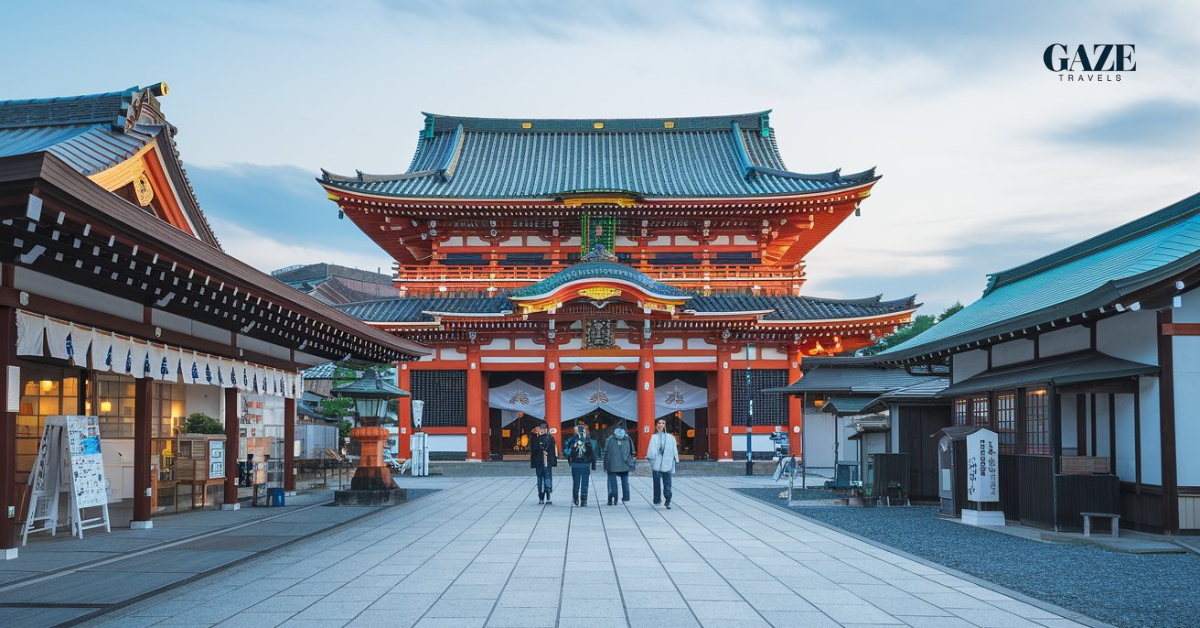Japan, a land where ancient traditions seamlessly blend with cutting-edge technology, beckons travelers with its unique charm. If planning a one-week trip, you’re in for a treat. This Japan Itinerary 7 Days will guide you through the cultural heart of Kyoto, the bustling metropolis of Tokyo, the serene deer-filled parks of Nara, and the iconic Mt. Fuji. Buckle up for a whirlwind adventure that’ll leave you yearning for more! With this Japan Itinerary 7 Days, you’ll explore the best of the country in just a week. This Japan Itinerary 7 Days perfectly balances city life and nature, ensuring you see all the highlights. Don’t miss out—use this Japan Itinerary 7 Days to make the most of your trip. Whether it’s your first time or you’re returning, this Japan Itinerary 7 Days is designed for an unforgettable journey.
Let’s outline the specifics of this Japan Itinerary 7 Days.
Embracing the Land of the Rising Sun
Japan’s allure lies in its ability to surprise and delight at every turn. From the neon-lit streets of Tokyo to the tranquil bamboo groves of Kyoto, this island nation offers a sensory feast. Our one-week itinerary is designed to give you a taste of Japan’s diverse offerings, balancing urban exploration with natural wonders.
“Japan never considers time together as time wasted. Rather, it is time invested.” – Donald Richie
When planning your trip, consider the seasons. Spring (March to May) brings the famous cherry blossoms, while autumn (September to November) offers stunning foliage. Summer can be hot and humid, but it’s festival season. Winter, though cold, offers unique experiences like snow monkeys and less crowded attractions.
Pre-Trip Essentials: Setting the Stage for Your Japanese Adventure

Before you jet off, let’s cover some crucial Japan travel tips:
- Visa Requirements: Most Western countries enjoy visa-free entry for short stays. Double-check your country’s status on the official Japanese embassy website.
- Currency: The Japanese Yen reigns supreme. While credit cards are increasingly accepted, cash is still king. Pro tip: get some yen before you arrive, as not all ATMs accept foreign cards.
- Transportation: The Japan Rail Pass (JR Pass) is your golden ticket to economical travel. It covers most Shinkansen (Bullet Train) lines and JR-operated transport. Buy it before you arrive in Japan!
- Cultural Etiquette:
- Bow when greeting
- Remove shoes when entering homes or certain restaurants
- Don’t tip (it’s considered rude!)
- Be quiet on public transport
- Packing Essentials:
- Comfortable walking shoes
- Portable charger
- Universal adapter (Japan uses Type A and B plugs, 100V)
- Small towel (many public restrooms don’t have hand dryers)
You Might Also Like https://gazetravels.com/la-leona-waterfall/
Day 1: Touchdown in Tokyo – Your Gateway to Japan
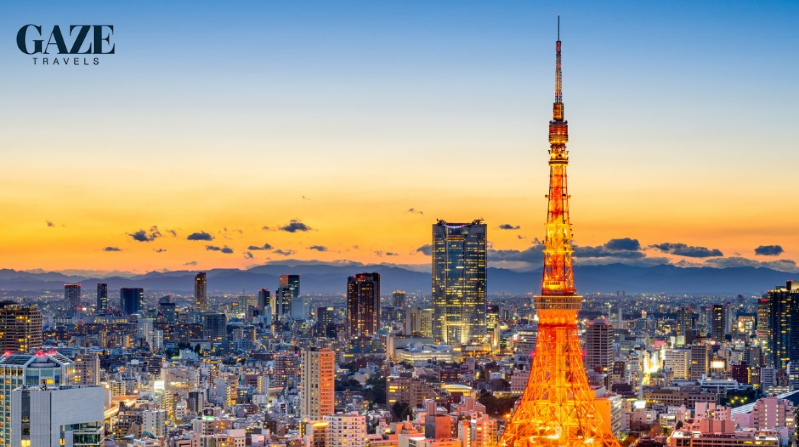
Your Japanese adventure begins at either Narita Airport or Haneda Airport. Here’s how to hit the ground running:
- Pocket WiFi: Reserve your pocket wifi device online and pick it up at the airport. It’s a lifesaver for navigation and translation.
- JR Pass Exchange: Head to the JR East Travel Service Center to exchange your JR Pass voucher for the actual pass. Don’t activate it yet if you’re heading straight to Kyoto!
- Airport to Tokyo: The Narita Express (NEX) whisks you to Tokyo Station in about an hour. It’s covered by the JR Pass, but you’ll need to reserve a seat.
- First Night Accommodation: Stay near Tokyo Station for convenience. The Tokyo Station Hotel offers luxury with history, while UNIZO INN provides budget-friendly comfort.
Days 2-4: Kyoto – The Heart of Traditional Japan
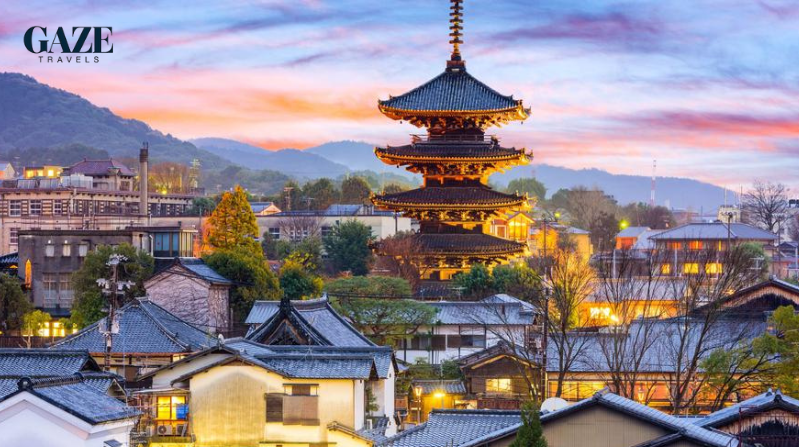
Rise and shine! It’s time to hop on the Tokaido Shinkansen to Kyoto. The journey takes about 2.5 hours on the Hikari or Kodama trains (covered by JR Pass).
Where to Rest Your Head in Kyoto
Kyoto offers accommodations for every budget:
| Type | Suggestion | Notable Feature |
|---|---|---|
| Luxury | Four Seasons Hotel Kyoto | Private garden views |
| Mid-range | Hotel Granvia Kyoto | Direct access to Kyoto Station |
| Budget | K’s House Kyoto | Social atmosphere, great for solo travelers |
Unmissable Kyoto Attractions
- Fushimi Inari-Taisha:
- Thousands of vibrant orange torii gates
- Best visited early morning or evening to avoid crowds
- Hike to the summit for panoramic city views (2-3 hours round trip)
- Kinkaku-ji Temple (Golden Pavilion):
- Zen temple covered in gold leaf
- Visit in the morning for the best light for photos
- Don’t miss the beautiful stroll gardens
- Arashiyama Bamboo Grove:
- Otherworldly bamboo forest
- Nearby attractions: Tenryu-ji Temple, Togetsukyo Bridge
- Rent a bike to explore the area efficiently
- Gion District:
- Traditional geisha district
- Take an evening stroll for a chance to spot geisha
- Join a guided tour for insights into geisha culture
Kyoto Culinary Adventures
- Nishiki Market: 400-year-old market dubbed “Kyoto’s Kitchen”
- Tea Ceremony: Experience the art of tea at En, a tea house in Southern Higashiyama
- Kaiseki: Try this multi-course feast at Gion Karyo for a splurge-worthy meal
Day 5: Nara – Ancient Capital and Deer Paradise
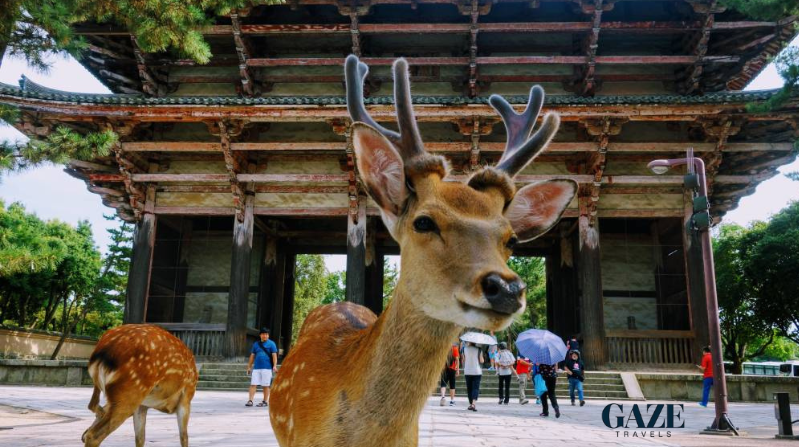
An easy day trip from Kyoto, Nara packs a punch with its cultural sites and friendly deer.
Getting There
Take the JR Nara Line from Kyoto Station to Nara Station (45 minutes, covered by JR Pass).
Nara’s Must-See Spots
- Todaiji Temple:
- Home to the Great Buddha (Daibutsu), one of Japan’s largest bronze statues
- The wooden structure housing the Buddha is the world’s largest wooden building
- Nara Deer Park:
- Over 1,000 free-roaming deer considered messengers of the gods
- Buy “shika senbei” (deer crackers) to feed them, but be prepared for enthusiastic deer!
- Kofukuji Temple:
- Features Japan’s second-tallest five-story pagoda (50.1 meters)
- Don’t miss the Eastern Golden Hall, housing important Buddhist statues
Local Eats
While in Nara, try kakinoha-zushi (persimmon leaf-wrapped sushi) at Izasa, a local institution since 1781.
End your day by heading back to Kyoto and catching the Shinkansen to Tokyo for the next leg of your journey.
Day 6: Mt. Fuji – Japan’s Iconic Peak
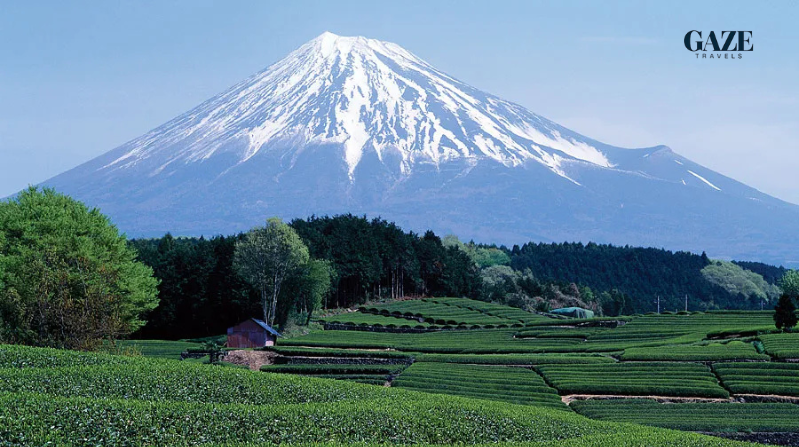
No trip to Japan is complete without glimpsing the majestic Mt. Fuji. Here’s how to make the most of your day:
- Take an early Shinkansen from Tokyo to Otsuki, then switch to the Fujikyuko Line to Kawaguchiko Station.
- Lake Kawaguchiko offers stunning views of Mt. Fuji. Rent a bike to circle the lake, or take a sightseeing boat cruise.
- Head to the 5th Station Mt. Fuji via bus. At 2,300 meters above sea level, it’s the highest point accessible by road.
- Alternative activities:
- Visit Chureito Pagoda for the classic Mt. Fuji view
- Explore Oshino Hakkai, a set of eight ponds fed by snowmelt from Mt. Fuji
- Brave the rides at Fuji-Q Highland amusement park
Return to Tokyo in the evening, ready for your final days in the capital.
You Might Also Like https://gazetravels.com/red-dirt-waterfall-kauai/
Days 7-8: Tokyo – The Vibrant Metropolis
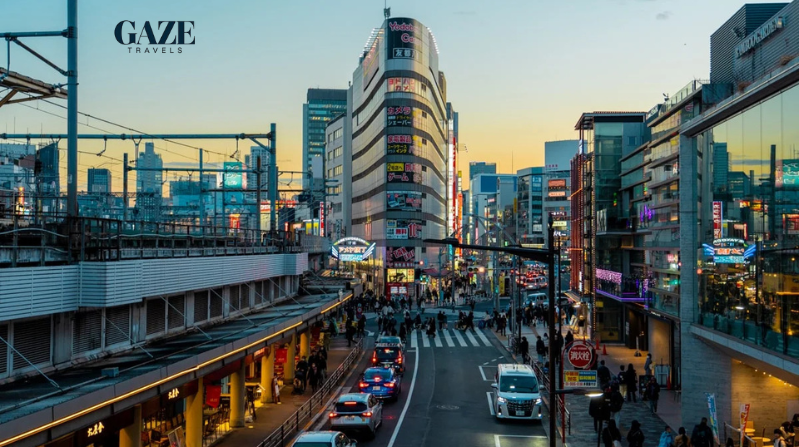
Tokyo, a city where the future is now, deserves at least two full days of exploration.
Where to Stay
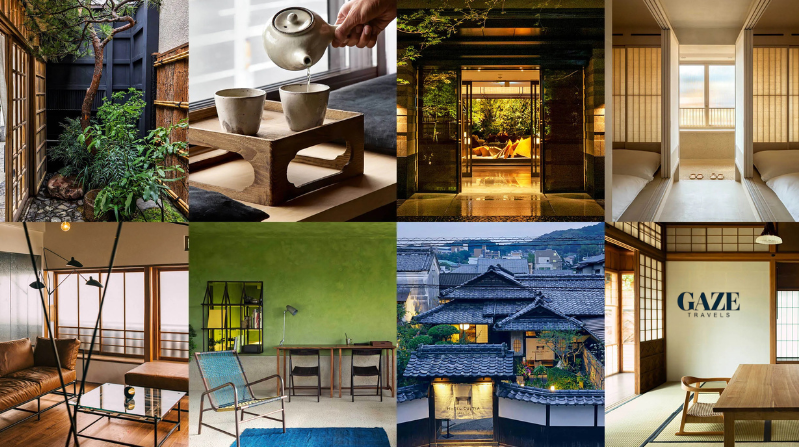
- Shinjuku: Heart of nightlife and shopping. Try the Park Hyatt for luxury or Shinjuku Granbell for mid-range comfort.
- Shibuya: Fashion central. The Cerulean Tower Tokyu Hotel offers great views.
- Asakusa: Traditional vibe. Stay at The Gate Hotel for rooftop views of Tokyo Skytree.
Tokyo’s Top Attractions
- Sensoji Temple & Nakamise Shopping Street:
- Tokyo’s oldest temple
- Shop for souvenirs along the approach
- Tokyo Skytree vs. Tokyo Tower:
- Skytree: Taller (634m), newer, great for night views
- Tower: More iconic, less crowded, closer to central Tokyo
- Meiji Shrine & Yoyogi Park:
- Serene forest in the heart of Tokyo
- Great for a morning jog or peaceful stroll
- Harajuku & Takeshita Street:
- Center of Japan’s most extreme teenage cultures and fashion styles
- Try rainbow cotton candy and other yummy food.
- Shibuya Crossing & Hachiko Statue:
- World’s busiest pedestrian crossing
- Pay respects to the loyal dog Hachiko at his statue
Unique Tokyo Experiences
- teamLab Borderless or Planets: Mind-bending digital art museums
- Sumo Stable Visit: Watch morning practice (if available)
- Tsukiji Outer Market: Food tour of the world’s once-largest fish market
- Akihabara: Electronics and Anime Culture Paradise
Tokyo Culinary Adventures
- Sushi breakfast at Toyosu Market
- Ramen street at Tokyo Station (try Rokurinsha for tsukemen)
- Izakaya hopping in Shinjuku’s Omoide Yokocho
- Themed cafes in Akihabara (maid cafes, robot restaurant)
Day 9: Sayonara, Japan

As your whirlwind week comes to a close, make the most of your last moments:
- Last-minute shopping at Ginza or Omotesando
- Airport transfer via Narita Express (covered by JR Pass)
- Use the tax-free counter at the airport for refunds on eligible purchases
Practical Tips for Your Japan Journey
- Rail Navigation: Download Japan Transit Planner app for easy route planning
- Onsen Etiquette: Wash thoroughly before entering the bath, no swimsuits allowed
- Convenience Stores: Your go-to for ATMs, quick meals, and forgotten essentials
- Language Barrier: Google Translate app with downloaded Japanese language pack is a lifesaver
- Dietary Restrictions: Learn key phrases to communicate your needs, or carry a translation card
You Might Also Like https://gazetravels.com/museo-ebraico-di-torino/
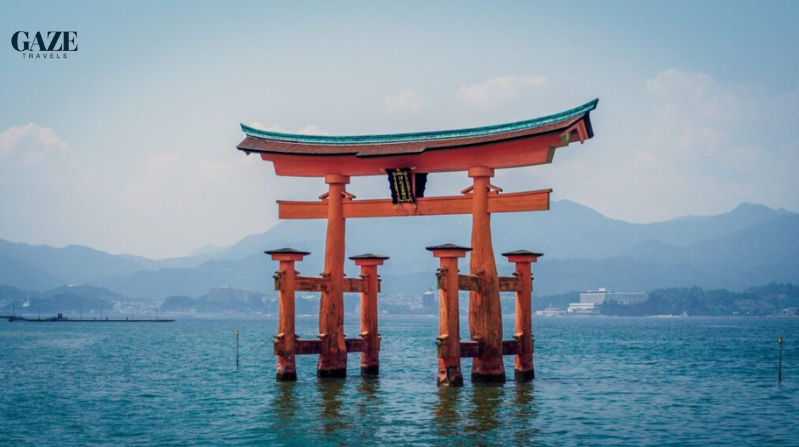
Conclusion: Reflecting on Your Whirlwind Japanese Adventure
One week in Japan offers a tantalizing taste of this fascinating country. From the serenity of Kyoto’s temples to the organized chaos of Tokyo’s Shibuya Crossing, you’ve experienced the yin and yang of Japan.
While this itinerary packs in the highlights, remember that Japan rewards slow travel too. Consider extending your stay or planning a return trip to dive deeper into each location.
Remember, Japan changes with the seasons. Cherry blossoms in spring, vibrant festivals in summer, colorful foliage in autumn, and snow-capped Mt. Fuji in winter – each season offers a unique perspective on this incredible country.
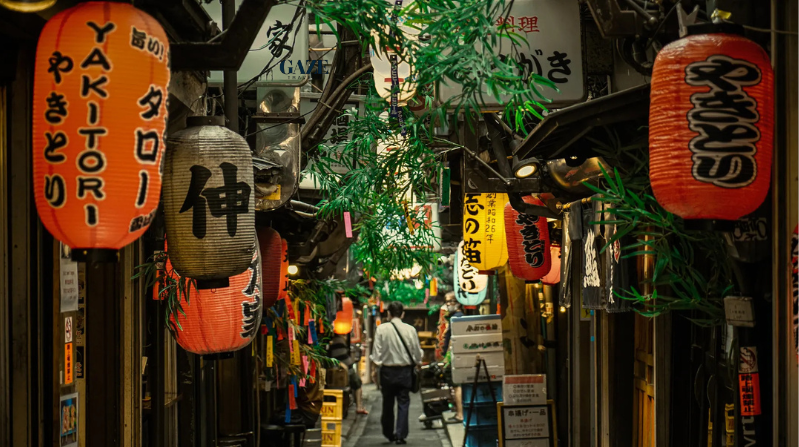
FAQs: Your Burning Questions Answered
Q: Is one week enough for Japan?
A: While you can see the highlights in a week, 10-14 days allows for a more relaxed pace and deeper exploration.
Q: How much should I budget for this trip?
A: Budget around $150-$200 per day, including accommodation, food, and local transport. The JR Pass (about $280 for 7 days) is an additional upfront cost.
Q: Do I need to speak Japanese to get by?
A: While knowing basic phrases helps, many signs in tourist areas are in English, and most Japanese people are helpful despite language barriers.
Q: What’s the best way to handle money in Japan?
A: Bring cash and a credit card. Many places still prefer cash, especially smaller establishments.
Q: How to deal with jet lag on a short trip?
A: Try to adjust to local time immediately. Stay awake until local bedtime on your arrival day, and get plenty of sunlight to help reset your body clock.
Embarking on a journey through Japan is like stepping into another world – one where tradition and innovation dance in harmony. From the moment you land at Narita Airport to your final bowl of ramen, every experience will etch itself into your memory. So pack your bags, charge your camera, and get ready for the adventure of a lifetime in the Land of the Rising Sun!
You Might Also Like https://gazetravels.com/phuket-happiness-trips-turtle-village/

Luna Smith is the experienced blogger behind Gaze Travels. With a passion for exploring new destinations and sharing travel tips, Luna brings her firsthand experiences and insights to every post, helping readers plan their adventures with confidence and ease

